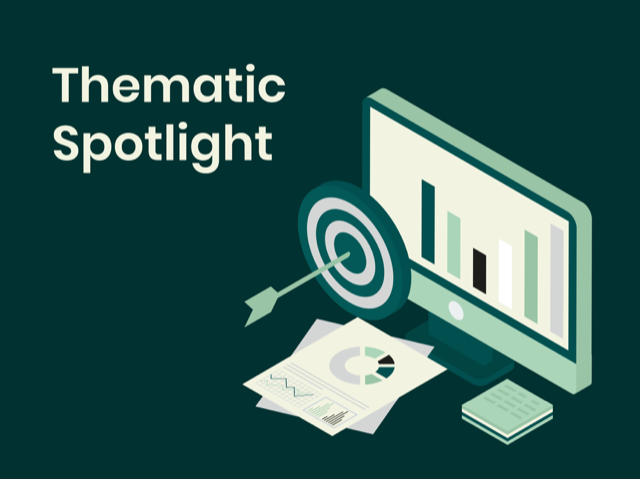
This Website allows the sending only of so-called “first-party” analytic cookies to guarantee its technical functioning and to analyse aggregate data on Website visits. By closing this banner, or clicking on any element in the web page, the use of these cookies is accepted.


Plenisfer Investments SGR
The narrative about China, as it enters the Year of the Dragon, now depicts the country alternately as a giant destined to conquer the world, or as an unsustainable economic apparatus that has entered terminal decline and is destined for rapid collapse.
In Plenisfer we see it differently. We think it is necessary to "get inside the Dragon head" that is, to analyse the dynamics taking place in the country, aware that investing in China with the past approach is no longer viable. We look to the future, convinced that the best question to be asked today is one: to invest in China, yes or no?
Our answer is yes, because unrepeatable opportunities can be found in China, but "to be handled with care."
What should we not forget about China?
China still houses one-third of the world's manufacturing capacity, generates 18% of global GDP, has 16% of all listed companies and 20% of total market capitalization*. It is the world's second largest economy by most metrics, but it is facing serious problems.
From a valuation perspective, equity indices look cheap: the CSI300 is trading at 11.3 times* the projected 2024 PE and the Hang Seng at 8.2 times*, compared with 21.3 times of the S&P500*.
But this is a truism. Imagine you were a long-term investor in 2001 and you had $1000 to invest in Indian or Chinese stocks. If you had known at the time that over the next two decades India's economy would grow 8 times, but China's would grow almost 15 times, which country would you have put your money on?
$1000 invested in the main Indian index in 2001 would be worth over $14,000 today (with dividends reinvested). The same amount put into a Chinese equivalent would be worth less than a third. This is only partly the result of the contraction over the past three years (-40% from the peak of the CSI300 in February 2021). In short: history tells us about that passive investing in China does not work, and that the quality of companies in the indexes is very mixed.
China's listings: a mediocre structure
Chinese stock lists have a low-quality structure. Why? Mainly because Chinese indexes have long overweighted companies characterized by poor quality and governance at valuations that were high relative to the goodness of the business. This is something that P/E metrics do not capture. There are many opportunities in China, but only if you do the research activity to understand where the value is. At a time when many international investors have given up on China, conditions are favourable for those who are still willing to do the work.
The "bear" scenario...
There are mainly three things to worry about:
- First, China's old growth model, driven by strong exports, financial repression, intense competition among local governments and easy productivity gains, has stopped working. It is unclear what can take its place.
- Second, the deterioration of China's foreign relations, especially with the United States, has become irreversible. Even moderate Chinese intellectuals and politicians have become convinced that the United States will never accept, peacefully or otherwise, a rising China. This creates enormous economic costs as isolationist policies on both sides feed off each other.
- Third, after a decade of intense centralization of power, many question Beijing's ability to quickly correct policy mistakes to ensure long-term stability, a prerequisite for sustainable economic growth.
It is also not difficult today to imagine extreme scenarios, such as a conflict around Taiwan. But these are precisely extreme scenarios, the impact of which on ex-China global portfolios would in any case be enormous.
...and the "bull" scenario
Despite these headwinds, the determination of the Chinese to improve their situation has not suddenly vanished. Many Chinese, of all levels of education and income, continue to see their country as naturally destined to become the world's largest economy and will not settle for less.
On a historical scale, today's problems are nothing new. For instance, the imperial court in Beijing and private trade had a complicated relationship for centuries (well before Marx). Excessive state isolation during the last dynasties contributed to China's lack of the first industrial revolution, and most Chinese know this very well.
So, as investors, what to do?
First, we should be very selective, willing to do the research work and ready, in some cases, to deal with volatility in the short term, since the path is unlikely to be smooth.
Second, in some cases, High quality and low prices are a winning combination. If a company trades at low multiples, generates and distributes significant cash flows, investing properly what is left over, investors can afford to wait. Therefore, we should continue to look for these quality companies in sectors that are relatively less vulnerable to structural change and that, from these, could eventually benefit.
Third, reaching China's announced growth target of 5 percent in 2024 and beyond is very unlikely unless policies support structural growth in domestic consumption. In our view, policymakers might eventually come to this conclusion.
Disclaimer
This analysis relates to Plenisfer Investments SGR S.p.A. ("Plenisfer Investments") and is not a marketing communication regarding a Fund, investment product or investment services in your country. This document does not constitute an offer or invitation to sell or buy any securities or any asset or venture described herein and does not form the basis of any contract.
Any opinions or forecasts provided are current as of the date specified, may change without notice, do not predict future results, and do not constitute a recommendation or offer of any investment product or service. Past performance does not predict future returns. There can be no guarantee that an investment objective will be met or that there will be a return on capital. This analysis is intended only for professional investors in Italy under the Markets in Financial Instruments Directive 2014/65/EU (MiFID). It is not intended for retail investors or US Persons, as defined in Regulation S of the United States Securities Act of 1933, as amended.
Information is provided by Plenisfer Investments, authorized as a UCITS management company in Italy, regulated by the Bank of Italy - Via Niccolò Machiavelli 4, Trieste, 34132, Italy - CM: 15404 - LEI: 984500E9CB9BBCE3E272.
All data used in this analysis, except where otherwise indicated, are provided by Plenisfer Investments. This material and its contents may not be reproduced or distributed, in whole or in part, without the express written consent of Plenisfer Investments.
*Source: Bloomberg, Plenisfer Investments
Plenisfer Investments SGR S.p.A.
Via Niccolò Machiavelli 4
34132 Trieste (TS)
Via Sant'Andrea 10/A, 20121 Milano (MI)
info@plenisfer.com
+39 02 8725 2960
Contact us at info@plenisfer.com
Please read the KIID as well as the Prospectus before subscribing. Past performance is no indication of future performance.
The value of your investment and the return on it can go down as well as up and, on redemption, you may receive less than you originally invested.
© Copyright Plenisfer Investments onwards 2020. Designed by Creative Bulls. All rights reserved.
